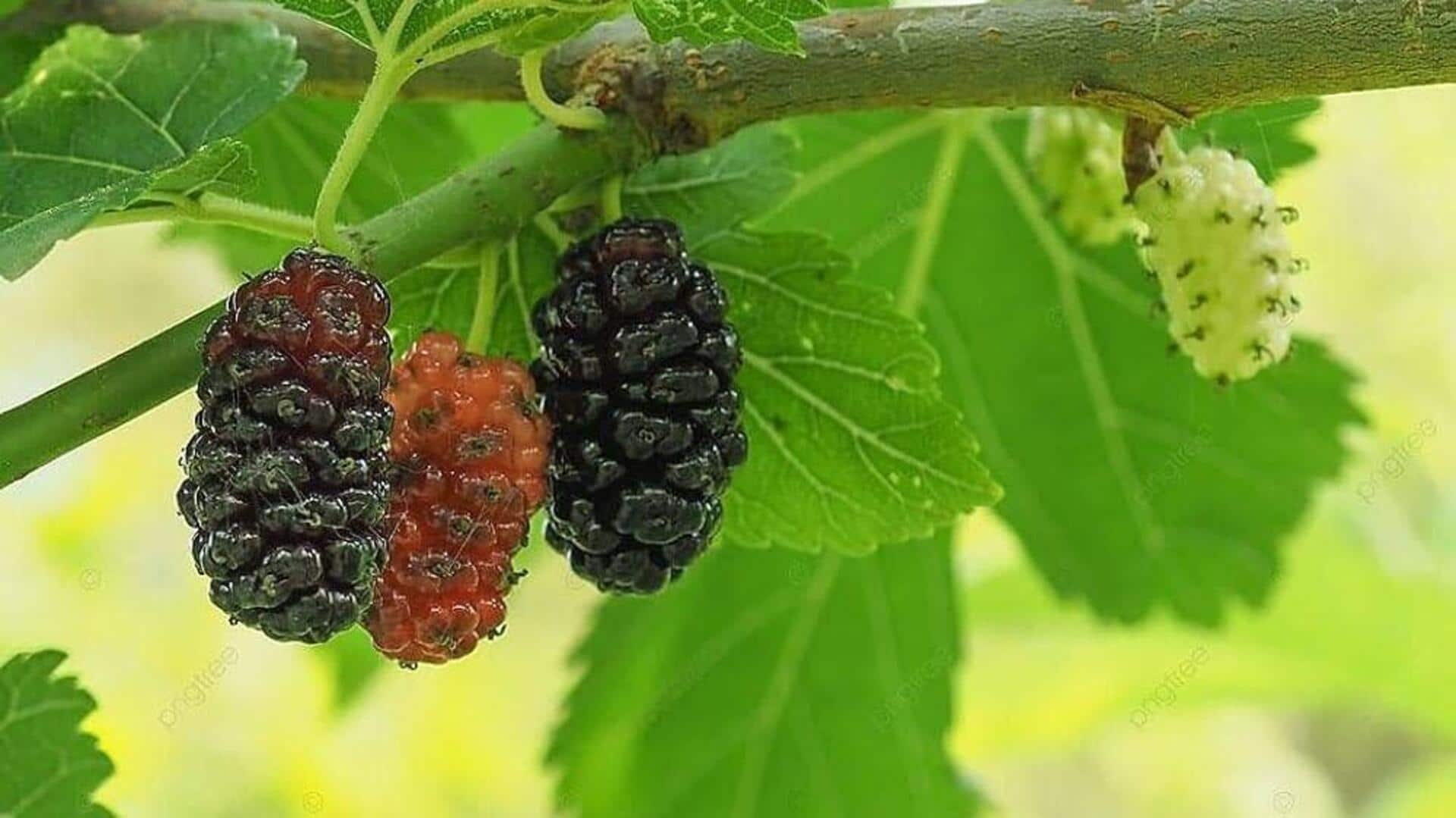
How to grow dwarf mulberry bushes at home
What's the story
Growing dwarf mulberry bushes indoors is perfect for home gardeners. Not only do these tiny plants accommodate indoor spaces well, they provide fresh fruit without requiring much room. With proper care, they can grow well indoors, beautifying your home and providing produce. Here, we've listed some key tips for starting your indoor mulberry gardening adventure.
Container selection
Choosing the right container
Selecting an appropriate container is the most important step in growing dwarf mulberry bushes indoors. Preferably select a pot that is at least 12 inches in diameter to give them enough room to grow roots. Make sure the container has drainage holes to avoid waterlogging, which can damage the plant's roots. You can use a saucer below the pot to catch excess water and save your indoors from damage.
Soil needs
Soil requirements and preparation
Dwarf mulberry bushes grow best in well-draining soil enriched with organic matter. A blend of potting soil with perlite or sand can improve drainage capabilities. Add compost or aged manure to the soil to provide essential nutrients for healthy growth. Regularly check soil moisture levels, keeping it consistently moist but not overly saturated.
Light & temperature
Light and temperature conditions
These plants need plenty of sunlight indoors to thrive, preferably six to eight hours a day. Place your bush near a south-facing window where it can get direct sunlight or use grow lights in case natural light falls short. Keep indoor temperatures between 65 degrees Fahrenheit and 75 degrees Fahrenheit (approximately 18 degrees Celsius to 24 degrees Celsius) as extreme fluctuations may affect growth.
Watering tips
Watering practices
Proper watering practices are vital for maintaining healthy dwarf mulberry bushes indoors. Water thoroughly when the top inch of soil feels dry, allowing excess water to drain away completely before returning it to its saucer or tray beneath its container base again afterward. Each time you do so too often could lead toward root rot issues instead. Over time, eventually, otherwise, potentially, even still yet also, too much watering might cause similar problems.